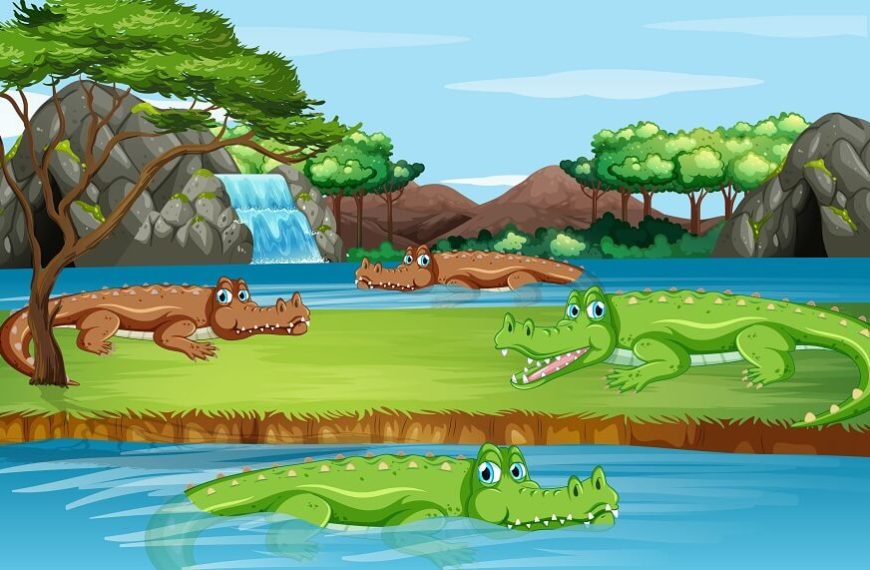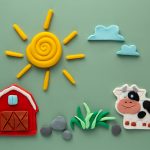What are Amphibians?
Amphibians are vertebrates with cold blood that belong to the Amphibia group. They undergo metamorphosis, transitioning from aquatic larvae to terrestrial adults. Known for permeable skin and dual respiration, they thrive in diverse habitats worldwide. Teaching kids about Amphibians pictures with names can be a fun and educational experience, capturing their curiosity about the fascinating world of these unique creatures. Here, we are going to learn about what amphibians are, the types, and the characteristics of amphibians.
Where do Amphibians Live?
Amphibians inhabit various environments, including wetlands, forests, grasslands, and deserts.
Many species opt for areas with admission to freshwater, together with ponds, lakes, and streams.
Some amphibians are adapted to arboreal life, whilst others thrive in burrows or underground habitats.
Distribution levels range globally, with amphibians found on each continent besides Antarctica.
What Amphibians Eat?
Amphibians are primarily carnivorous, feeding on insects, worms, and small invertebrates.
Tadpoles often consume algae and plant matter, transitioning to an insect-based diet as they mature.
Some larger amphibians, like bullfrogs, may eat small mammals and birds.
Their diet varies between species, reflecting their ecological roles in different ecosystems.
Characteristics of amphibians:
- Metamorphosis:
- Moist Skin:
- Dual Respiration:
- Cold-Blooded:
- Semi-Aquatic Lifestyle:
- External Fertilization:
- Carnivorous Diet:
- Unique Reproductive Strategies:
- Vocalization:
- Hibernation and Estivation:
- Regeneration:
- Sensitive to Environmental Changes:
Amphibians undergo metamorphosis, a process involving a distinct change in body form as they transition from aquatic larvae to terrestrial adults. This transformation often includes changes in respiratory structures, limb development, and adaptations for life on land.
Amphibians have permeable skin that allows for the exchange of gases and water absorption. This moist skin is essential for respiration, especially in species that spend part of their life cycle in water.
Amphibians utilize a dual respiratory system. While they primarily respire through their skin, many species develop lungs or lung-like structures as adults to breathe air. This dual adaptation allows them to extract oxygen both from the air and water.
Amphibians are ectothermic, which means that their body temperature is controlled by the environment. They cannot generate warmth internally, and their activity stages are affected by ambient temperatures. Because they rely upon external assets of warmth, they are extra active in hotter weather.
Amphibians can live in both aquatic and terrestrial environments. They frequently lay their eggs in water, and their moist skin helps in their survival in terrestrial environments. While many species spend the majority of their lives on land, many return to water for reproduction.
Most amphibians practice external fertilization. Females lay eggs, and males release sperm into the environment. Fertilization occurs externally, often in water, where the eggs develop into larvae before undergoing metamorphosis into adult forms.
Amphibians are in particular meat eaters, feeding on bugs, worms, and small arthropods. Their diet can vary depending on existence stage, with larvae normally being herbivorous or omnivorous.
Amphibians employ various reproductive strategies. Some species lay eggs in water, and the aquatic larvae undergo metamorphosis into adults. Others may give birth to live young or lay eggs on land, demonstrating adaptability to different environments.
Many amphibians use vocalizations for communication, especially during the breeding season. Frogs and toads, in particular, are known for their diverse calls, which serve purposes such as attracting mates or establishing territory.
To cope with seasonal changes, amphibians may undergo hibernation (in cold weather) or estivation (in hot and dry conditions). These dormant states help conserve energy and minimize water loss during unfavorable environmental conditions.
Some amphibians, particularly salamanders, possess a remarkable ability to regenerate lost body parts. This includes regrowing limbs, tails, and even parts of internal organs. This regenerative capacity is unique among vertebrates.
Because amphibians are extremely sensitive to environmental changes, they are excellent indicators of the health of ecosystems. Their population declines or deformities can signal issues such as pollution, habitat loss, or emerging diseases.
Types of Amphibians:
Teaching kids about this variety of amphibian pictures with names helps foster an understanding of amphibian’s ecological roles and the importance of preserving their habitats. Let’s explore some types of amphibians.
- Frogs and Toads:
- American Bullfrog:
- Order Caudata:
- Axolotl:
- Order Gymnophiona:
- Narrow-Mouthed Frogs:
- True Toads:
- Tree Frogs:
- True Frogs:
- Poison Dart Frogs:
- Giant Salamanders:
- New Zealand Frogs:
- Burrowing Toads:
Common Frog: Frogs and Toads are considered as common amphibian’s examples. Found in a variety of habitats, common frogs are known for their smooth, moist skin. They lay eggs in water, and their tadpoles undergo metamorphosis into terrestrial adults.
One of the largest frogs, the American bullfrog is native to North America. It has a distinctive deep call and is characterized by its greenish-brown coloration.
Eastern Red-Spotted Newt (Notophthalmus viridescens): This North American newt undergoes a fascinating life cycle, transitioning from aquatic larvae to a terrestrial eft stage before becoming a fully aquatic adult.
Known for its neotenic characteristics, the axolotl retains its aquatic larval features throughout its life. It has remarkable regenerative abilities, even regrowing entire limbs.
Indian Caecilian (Ichthyophis):Found in parts of Asia, caecilians resemble large worms or snakes. They are adapted for a fossorial (burrowing) lifestyle and are often found in soil or leaf litter.
Painted Burrowing Frog (Callulina dawida): Native to Tanzania, this small frog has vibrant colors and is known for its burrowing behavior. It spends much of its life underground.
Colorado River Toad: Found in the southwestern United States and Mexico, this toad secretes potent toxins from its skin. It is also known as the Sonoran Desert toad.
Red-Eyed Tree Frog: Native to Central America, this strikingly colored tree frog has large red eyes and is arboreal, spending much of its time in trees.
Green Frog:Common in North America, the green frog is known for its distinct call and greenish-brown coloration. It inhabits various aquatic environments.
Golden Poison Dart Frog: Native to the rainforests of Colombia, this small but brightly colored frog carries potent toxins. Indigenous people have historically used these toxins for blowdarts.
Chinese Giant Salamander:The world’s largest amphibian, the Chinese giant salamander, is critically endangered. It inhabits cool, fast-flowing streams in China.
Archey’s Frog: Native to New Zealand, Archey’s frog is a primitive species with no external eardrums. It is known for its distinctive, high-pitched call.
Mexican Burrowing Toad: Found in Mexico and Central America, this toad has a unique appearance with a shovel-like snout adapted for burrowing in sandy soils.
At EuroKids, we understand the importance of learning about amphibians. These Amphibians examples provide an opportunity for EuroKids to showcase the beauty of biodiversity. EuroKids spark kid’s mind’s thoughts through engaging lessons and hands-on experiences, encouraging an early connection with the natural world.












